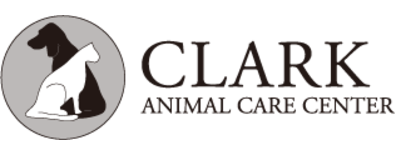Clark Animal Care Center
Behavior and Training – Dogs

Importance of Early Socialization in Puppies
Veterinary Behavior Society Announces Position Statement on the Importance of Early Socialization in Puppies Starting Prior to Completion of Vaccination Series
While veterinarians are appropriately concerned about infectious disease in young puppies, the fact is that behavioral issues, not infectious diseases, are the number one cause of death for dogs under three years of age. In many cases veterinarians contribute to these behavioral issues by recommending pets are kept away from possible germs until their vaccines series is complete.
Says E. Kathryn Meyer, VMD, President of the American Veterinary Society of Animal Behavior (AVSAB), “Puppies go through a sensitive period of socialization when they are uniquely prepared to benefit from exposure to social opportunities. From the time the owner adopts the puppy until 3-4 months of age, it is critical that the owner get the puppy out to meet other animals and people, and experience many different kinds of environments.”
If this window of opportunity is missed the consequences can be severe. Puppies can develop fear of unfamiliar people, dogs, objects, and environments. This fear can later develop into fear aggression. Meyer adds, “These puppies may also fail to develop coping mechanisms and grow up into dogs that are unable to adapt to new situations. This can severely inhibit the dog’s quality of life as well as the owner’s enjoyment of the pet.”
The AVSAB has issued a position statement on early socialization in puppies, which recommends that the standard of care for veterinarians be that they routinely recommend puppies received socialization before the vaccine series is complete. The puppy guidelines state that puppies can start puppy socialization classes as early as 7-8 weeks of age. In general, they should receive a minimum of one set of vaccines at least 7 days prior to the first class as well as a first deworming. Additionally, puppies should show no signs of illness during the classes and should be kept up to date on vaccines throughout the class.
Say NO to Punishment-Based Dog Training
A new position statement released by the American Veterinary Society of Animal Behavior (AVSAB) cautions veterinarians about the use of punishment-based dog training techniques that can cause serious behavioral problems.
Dr. John Ciribassi, AVSAB president states, “A major problem with using punishment is that it suppresses behavior temporarily but does not necessarily modify the underlying cause of the behavior. As a result, it may make animals worse in the long run. For example, a fear aggressive dog may become more fearful of people making future aggression more likely.”
Additionally, punishment may interfere with the bond that exists between the owner and animal. “We can have a problem with the pet not trusting the owner because it is unable to consistently anticipate what the owner is going to do in any given situation,” states Ciribassi. “This occurs because people tend to punish inconsistently and because punishment is often a consequence of the owner’s anger which leads to its use well after the bad behavior has occurred and in an overly intense level over a prolonged period.”
Instead of yelling at dogs, holding them down in an ‘alpha roll’, or using choke chains or pinch collars, the AVSAB suggests that “a more appropriate approach is to determine how the pet is being rewarded for the bad behavior, remove that reward and control the environment, and reward a more appropriate behavior.”
Conflict-Related Aggression
Reproduced with permission from the Purdue University Animal Behavior Clinic
Conflict-related aggression is referred to as dominance aggression by most behaviorists. Dominance aggression is defined as aggression directed towards household members in situations where the social position of the dominant dog is threatened. However, most dogs seen for “dominance aggression” are not dominant or confident dogs. Instead these dogs often act fearful or submissive. Owners often report that their dog shows ambivalent body language during and after an attack. These dogs may “slink off” after an attack, shake or show submissive behaviors or seem “remorseful” to the owner. Most dogs that are aggressive to household members are not dominant nor do they have confident personalities. Affected dogs may become aggressive when they are in a conflict situation. Many conflicts occur when a dog is put into a confrontational situation or when the dog cannot predict what is going to happen due to inconsistencies in dog-owner interactions. The dog is placed into a motivational conflict in these situations. He may want to be near the owner but also be unsure and nervous because he cannot predict what is going to happen. Affected dogs learn to use aggression to get themselves out of any uncomfortable situation. The aggression is reinforced because the anticipated “bad” event does not occur. For example, a child approaches a dog, the dog growls and the child retreats. The dog’s aggressive behavior has been rewarded because the source of the dog’s anxiety has been avoided. Behaviors reinforced in this manner are very persistent.
Treatment:
Because there are many different types of aggression that can be directed towards the owner a behaviorist needs to make a specific diagnosis and devise a treatment plan appropriate for the individual case. The following are techniques often used in the treatment of conflict-related aggression. Treatment should address the dog’s basic disposition (e.g. fearfulness), the way in which the dog is managed, and the cause of conflict (e.g. inconsistency) in the owner-dog interactions.
1. Avoid Confrontation: The situations in which confrontations are likely to occur should be avoided. Any confrontation may destroy progress made to that point in treatment. This may imply that the dog needs to be crate trained and crated or confined in an exercise pen unless being worked with. Crating is indicated when the owners are afraid of the dog, if small children are involved or if the owner is unable to ignore the dog. Toys and other assets that can cause confrontations should be removed. The dog is not to be allowed on the furniture, including the bed, if this has been a source of conflict in the past.
2. Utilize a Gentle Leader Headcollar®: The dog should wear a Gentle Leader Headcollar® with a dragline attached when the owners are home. A headcollar may allow the owner to control any aggression-inducing situations in a non-confrontational and consistent manner. Example: The dog has been aggressive when approached while on his bed, the owner may call the dog, utilize the headcollar and dragline to encourage the dog to “come”, ask the dog to “sit” and the dog may then be rewarded. The confrontation (conflict) is avoided and an appropriate and acceptable response is rewarded. The headcollar may also be useful for walking and training the dog. Regular exercise (twice daily) will often help to reduce the excitability of the dog.
3. Avoid Inconsistent Owner-Dog Interactions: The main reason for conflict resulting from owner-to-dog interaction is the fact that the dog cannot predict what is going to happen and does not know what to do. Therefore, owners are instructed to avoid all casual interactions with the dog and interact in a command- response-reward format. This assures that any interactions with the dog are consistent and predictable. The owner should give a command, the dog responds and is rewarded for performing the behavior.
4. Structured Obedience Exercises: Non-confrontational obedience training such as clicker training and utilization of a headcollar will provide an opportunity for predictable owner-dog interaction, desensitize the dog to owner behavior and allow the owner to substitute appropriate responses for aggression. Obedience training will also have a long lasting effect on the owner’s behavior toward the dog by making it more consistent. The dog can learn to predict what is going to happen and appropriately respond to an uncomfortable situation. In other words, the owner will be able to tell the dog what to do before he makes the wrong choice (aggression).
5. Do Not Use Punishment: Punishment is counter-indicated in treating aggression. No punishment of any type should be applied. Choke collars, pinch collars, verbal reprimands or physical punishment are all contraindicated in treating aggression. Punishment is almost always administered inconsistently and increases anxiety and fear.
6. Apply Behavior Modification for Specific Situations: Specific situations in which the dog shows aggression may be addressed by gradually exposing the dog to the threatening or conflict situation (e.g. the owner “standing over” the dog or the owner touching specific areas on the dog) and rewarding the dog for relaxation. A previously threatening situation can be associated with a pleasant event (giving the dog attention and petting only when the owner touches a previously sensitive body part). An appropriate behavior can be substituted for a previously inappropriate behavior (teach the dog to “shake hands” to have his feet handled and reward for the appropriate behavior).
The concept of Conflict-Related Aggression has profound implications. It challenges us to interpret the social relationship between dogs and owners in a more sophisticated way than as a dominance-submissiveness relationship. It points out the inappropriateness of domination techniques so often applied to puppies and adult dogs. It explains why any form of punishment for these cases of aggression is counterproductive.
Basket Muzzles
A properly fitted basket muzzle will allow your dog to pant and even drink water. A basket muzzle will allow you to ensure the safety of people encountering your dog. Basket muzzles work best when the dog has been slowly introduced to it and does not only wear the muzzle when something “bad” is happening.
To familiarize your dog with its new basket muzzle do the following: (treats should be used during all stages of fitting)
Allow your dog to sniff the muzzle and inspect it. Reward your dog for being around the muzzle.
Place small treats in the muzzle or through the bars, or smear the inside of the muzzle with something spreadable like peanut butter. Your dog should have to place it’s nose inside the muzzle to reach and obtain the treats.
After your dog is comfortable placing his nose in the muzzle, fasten the strap behind the ears. The neck strap should be snug and high enough to keep the muzzle on but not restrict your dog’s breathing.
Feed your dog small treats through the muzzle. Hot dogs cut into quarters lengthwise work well for this.
Muzzle fitting should be a positive experience for your dog. Remember to use lots of praise and treats. Proceed slowly and stop the fitting session before your dog is frustrated or tired. Multiple short, pleasant sessions will achieve better results than one long tiring session.
How to measure:
Select the type of dog breed and measure the length of the nose and the circumference of the nose in inches. Length: (L) Measure your dog approximately 1/2 inch below the eyes to the tip of the nose. Circumference: (C) Measure approximately 1/2 inch below the eyes and around snout.
Note: For small and medium dogs add approximately 1/2 inch for length and approximately 1/2 to 3/4 inch for circumference. For big and large dogs add approximately 1 inch for length and circumference.
Visit the websites below to purchase a quality basket muzzle. If you are unsure which muzzle will best fit your dog, call the company and tell them the breed, size, and muzzle shape of your dog.
http://www.morrco.com/dogmuzzles1.html Wire with padding, short nose, leather and plastic muzzles. On this site you order according to breed.
http://www.andrewsimports.com/medium.htm Wire padded muzzles ordered by breed.
http://www.dogmuzzle.com/index.html Many varieties of basket muzzles.
